
On 27 Apr 1846, Charles Joseph Van Depoele was born, a Belgian-American inventor who was one of the major contributors to the electric industry, especially in the field of transportation.
His 243 U.S. patents included motors, dynamos, lighting, electric railway systems, overhead trolley systems and underground railway systems. Other electrically powered mechanisms he designed included a conveyor, telpher system, rock drill, power-hammer and coal-mining machine.
Despite such a productive life, and great significance in the electric industry of his era, perhaps now his name is unfamiliar to you. If so, you will enjoy reading more about his background and invention in this Obituary of Charles Joseph Van Depoele from the Transactions of the American Institute of Electrical Engineers (1892).
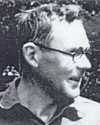
On 27 Apr 1896, Wallace Hume Carothers was born, the American chemist who developed the first synthetic polymer fibre to be spun from a melt, a polyamide. Today's book pick is: , by . Carothers took an infant science called polymer chemistry, defined it, and guided it toward its present maturity. Hermes tells the story of Carothers’s sudden dramatic research successes, the discoveries and his relentless slide into depression, alcohol, and suicide.
It is available from Amazon, typically about (As of earlier time of writing - subject to change.)
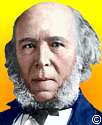 | If a single cell, under appropriate conditions, becomes a man in the space of a few years, there can surely be no difficulty in understanding how, under appropriate conditions, a cell may, in the course of untold millions of years, give origin to the human race. |
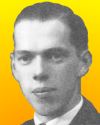 | Part of the strength of science is that it has tended to attract individuals who love knowledge and the creation of it. Just as important to the integrity of science have been the unwritten rules of the game. These provide recognition and approbation for work which is imaginative and accurate, and apathy or criticism for the trivial or inaccurate. … Thus, it is the communication process which is at the core of the vitality and integrity of science. |
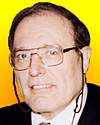 | A mathematician’s work is mostly a tangle of guesswork, analogy, wishful thinking and frustration, and proof, far from being the core of discovery, is more often than not a way of making sure that our minds are not playing tricks. |
| Before you look at today's web page, see if you can answer some of these questions about the events that happened on this day. Some of the names are very familiar. Others will likely stump you. Tickle your curiosity with these questions, then check your answers on today's web page. | |
| Births | |
 | Wallace Carothers, born 27 Apr 1896, was an American chemist who developed polymers (long-chain molecules) including the first successful synthetic rubber, neoprene (1931). He also produced (1935), the first synthetic polymer fibre to be spun from a melt, a polyamide. What is the common name of the polyamide he developed? |
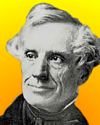 | The Morse Code was name after its American inventor, who was born 27 Apr 1791. Independent of similar efforts in Europe, he developed an electric telegraph (1832-35), after which he created his famous code in 1838. What is this inventor’s first name? |
| Deaths | |
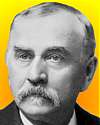 | Julius Sterling Morton (1832-1902) was an American who advocated for a Day, first observed in his state of Nebraska on 10 Apr 1872, to promote a certain activity statewide. From 1885, the day was officially recognized in Nebraska as a public holiday on Morton’s birthday, each 22 April, in his honor. It is now celebrated throughout America, and a number of countries worldwide, though its date and name varies. In the U.S., it now takes place on the last Friday of April. By what name is this Day usually known in America? |
| Events | |
 | On 27 Apr 1970, the discovery of element 105, was announced at the American Physical Society meeting in Washington, D.C. The work was done by Albert Ghiorso at the Lawrence Radiation Laboratory at the University of California, Berkeley, California. It has been named hahnium. What is the origin of the element name of hahnium? |
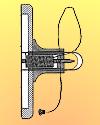 | On 27 Apr of a certain year, the first U.S. patent for an electric hearing aid was issued, titled a “Device for Aiding the Deaf to Hear.” The device employed bone conduction by which sound is passed through vibration of the skull bone. It was not until two decades later that the first commercially available hearing aid was produced by another inventor. In which decade was this first electric hearing aid U.S. patent issued? |
Fast answers for the previous newsletter for April 26: a faint electromagnetic radiation throughout the universe with a frequency consistent with the mathematical predictions of the big bang model • Charles Richter • birds • ammonia • Harlow Shapley.
 If you enjoy this newsletter, the website, or wish to offer encouragement or ideas, please send feedback by using your mail reader Reply button.
If you enjoy this newsletter, the website, or wish to offer encouragement or ideas, please send feedback by using your mail reader Reply button. Your click on a Facebook, StumbleUpon, or other social button on the site webpages is also a welcome sign of appreciation. Thank you for using them.
© This newsletter is copyright 2020 by todayinsci.com. Please respect the Webmaster's wishes and do not put copies online of the Newsletter — or any Today in Science History webpage. (If you already have done so, please remove them. Thank you.) Offline use in education is encouraged such as a printout on a bulletin board, or projected for classroom viewing. Online, descriptive links to our pages are welcomed, as these will provide a reader with the most recent revisions, additions and/or corrections of a webpage. For any other copyright questions, please contact the Webmaster by using your mail reader Reply button.
--
If you do not want to receive any more newsletters, Unsubscribe
To update your preferences and to unsubscribe visit this link
Executive Real Estate Business Class
-
"It was like a man with wings. It wasn't like anything you'd see on TV or in a monster movie." ...
About the publisher
Search This Blog
Blog Archive
-
▼
2021
(585)
-
▼
April
(57)
- On This Day for April 30 - George Washington inaug...
- Newsletter for Friday 30 April.
- On This Day for April 29 - British royal wedding, ...
- Newsletter for Thursday 29 April.
- On This Day for April 28 - Benito Mussolini execut...
- Newsletter for Wednesday 28 April.
- On This Day for April 27 - Independence for Sierra...
- Newsletter for Tuesday 27 April.
- On This Day for April 26 - Chernobyl nuclear accid...
- Newsletter for Monday 26 April.
- On This Day for April 25 - Hubble Space Telescope ...
- See How They Tracked Down Bin Laden
- Newsletter for Sunday 25 April.
- On This Day for April 24 - Installation of Pope Be...
- Newsletter for Saturday 24 April.
- On This Day for April 23 - Voting for Eritrea's in...
- Earth Day Bonus: Become a Climate Action Expert
- On This Day for April 22 - First Earth Day, Miguel...
- On This Day for April 21 - French elections held, ...
- Newsletter for Wednesday 21 April.
- On This Day for April 20 - Explosion on the Deepwa...
- Newsletter for Tuesday 20 April.
- On This Day for April 19 - American Revolution beg...
- Newsletter for Monday 19 April.
- On This Day for April 18 - The midnight ride of Pa...
- Newsletter for Sunday 18 April.
- On This Day for April 17 - Canada Act proclaimed, ...
- Newsletter for Saturday 17 April.
- On This Day for April 16 - Harriet Quimby's flight...
- Newsletter for Friday 16 April.
- On This Day for April 15 - Sinking of the Titanic,...
- Newsletter for Thursday 15 April.
- On This Day for April 14 - Abraham Lincoln shot, J...
- On This Day for April 13 - Alfred Dreyfus imprison...
- Newsletter for Tuesday 13 April.
- On This Day for April 12 - Launch of first space s...
- Newsletter for Monday 12 April.
- John of Gaunt: father of England’s medieval monarchy
- On This Day for April 11 - Napoleon's abdication a...
- Newsletter for Sunday 11 April.
- On This Day for April 10 - Anschluss approved in A...
- On This Day for April 9 - Fall of Baghdad, Jørn Ut...
- Newsletter for Friday 9 April.
- On This Day for April 8 - Celebration of the Buddh...
- On This Day for April 7 - Jack Nicklaus's first Ma...
- Newsletter for Wednesday 7 April.
- On This Day for April 6 - Olympics revived, Raphae...
- On This Day for April 5 - Battle of Maipú, Colin P...
- The history and origins of Easter
- On This Day for April 4 - Martin Luther King, Jr.,...
- Newsletter for Sunday 4 April.
- On This Day for April 3 - Implementation of the Ma...
- Newsletter for Saturday 3 April.
- On This Day for April 2 - Death of Pope John Paul ...
- Newsletter for Friday 2 April.
- On This Day for April 1 - Creation of Nunavut, Ser...
- Newsletter for Thursday 1 April.
-
▼
April
(57)
-
Blogroll
-
About
HistoryFact










0 comments:
Post a Comment